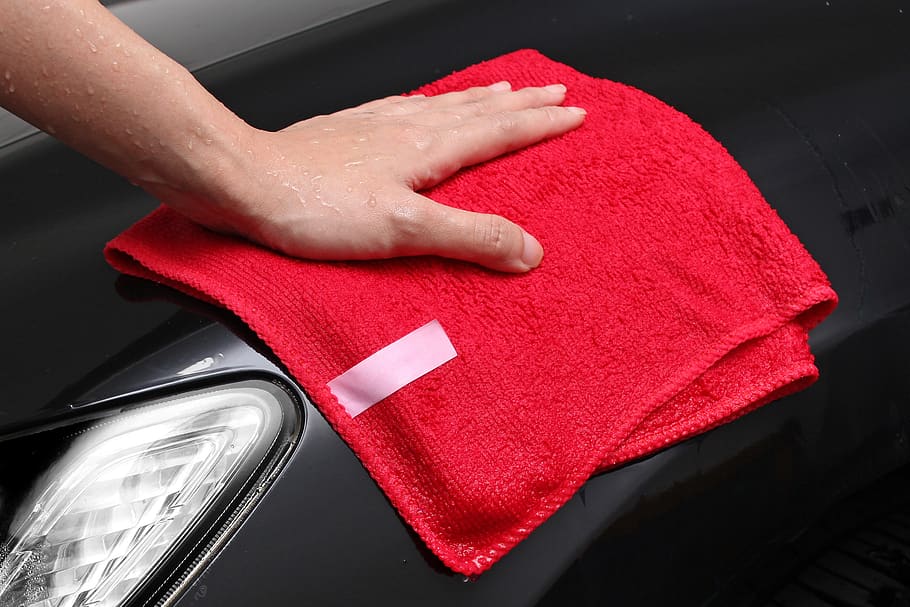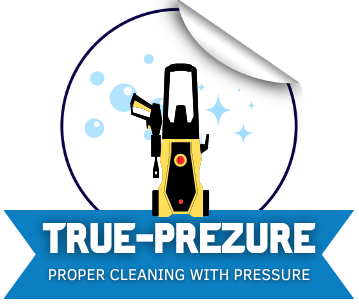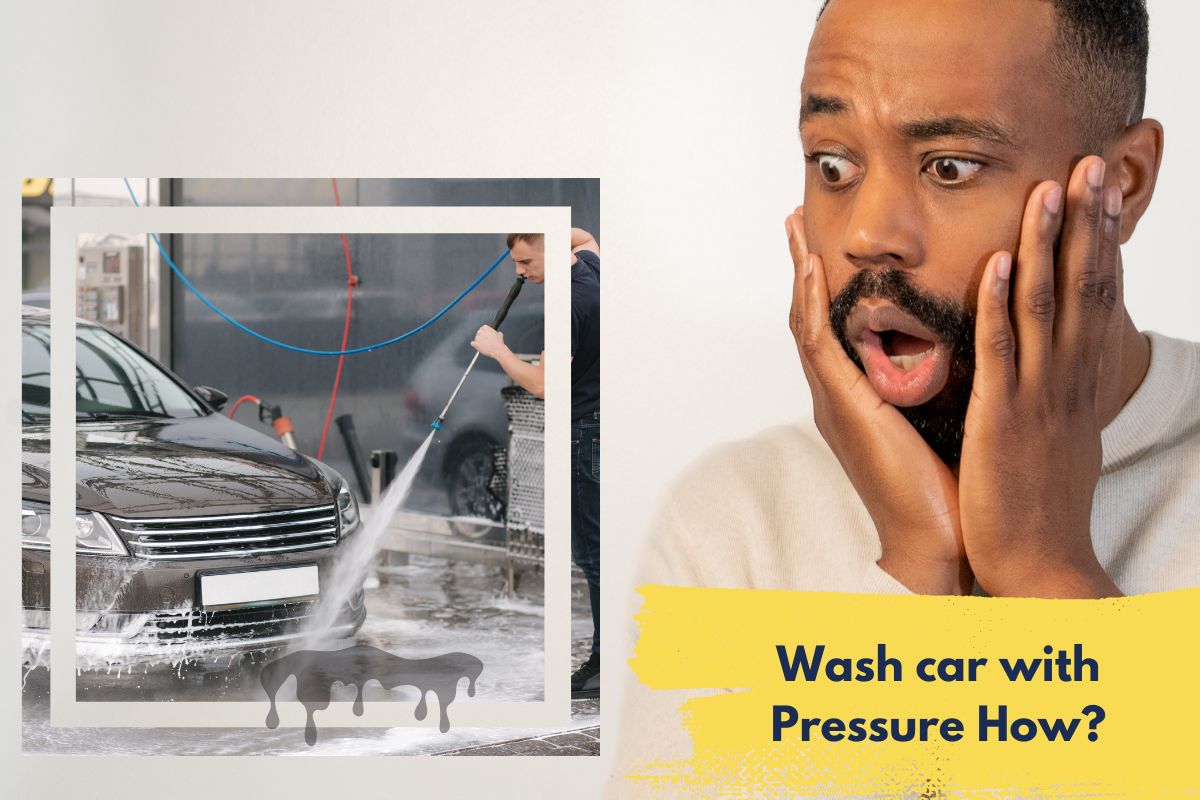Are you tired of spending your weekends at the carwash, waiting in line to get your vehicle cleaned? Or perhaps you’re looking for an efficient and cost-effective way to keep your car shining like new? Look no further!
In this expert guide, we’ll teach you how to wash a car with a pressure washer – saving time, money, and water while achieving professional-level results.
With our step-by-step instructions and handy tips, even beginners can transform their driveway into a DIY car-washing paradise. So gear up and let’s get started on giving your beloved ride the TLC it deserves!
What You’ll Need
To effectively wash your car with a pressure washer, you’ll need several essential items. First and foremost, a suitable pressure washer is crucial for this task. Look for one with adjustable pressure settings to ensure the safety of your car’s paintwork.
Next, acquire the appropriate nozzle attachments for your pressure washer. A 40-degree nozzle works best as it provides ample coverage without being too harsh on your vehicle’s surface. It would also be wise to invest in a foam cannon attachment that will help distribute soap evenly over the car.
Know Ryobi Vs Greenworks Pressure Washer winner in 2023
High-quality automotive soap designed specifically for use with pressure washers is another must-have item. This type of soap will not only clean efficiently but also cause no harm to your vehicle’s finish.
A bucket filled with clean water will come in handy when rinsing off dirt or debris from various parts of the car before using the pressure washer.
Don’t forget to have microfiber towels or chamois cloths ready for drying your car after washing it thoroughly. These materials are gentle on surfaces and highly absorbent, making them perfect for drying cars without causing scratches.
By gathering these essential items beforehand, you’re setting yourself up for success in cleaning your vehicle using a pressure washer while protecting its exterior from damage during the process.
Preparing Your Car
Before you start washing your car with a pressure washer, it’s important to properly prepare your vehicle. This step is crucial in order to ensure that you don’t damage the paint or any other parts of your car.
First, park your car in a shaded area to prevent soap and water from drying too quickly and leaving stains on the surface. Next, remove any loose dirt or debris from the exterior using a soft-bristled brush or microfiber towel. Pay attention to areas like wheel wells and undercarriage that tend to accumulate more grime.
After removing the surface dirt, give your car a thorough rinse with plain water using a hose or bucket. This will help loosen up any remaining dirt particles and make it easier for you to wash off later.
Once the rinsing is complete, apply an appropriate amount of cleaning solution onto your car’s surface by following instructions provided by manufacturer labels. Be sure not to use too much as this could cause streaks on the finish.
Cover any electrical components such as speakers with plastic bags or wrap them in cloth towels before starting pressure washing process so they won’t get damaged when wetted during cleaning procedure.
Washing Your Car
Washing Your Car
Now that you’ve prepared your car, it’s time to start washing it with the pressure washer. Before starting, make sure to put on safety goggles and gloves. You’ll also want to ensure that you’re using a nozzle with a wide spray pattern.
Start by rinsing off any loose dirt or debris from the exterior of your car with low-pressure water. Next, apply a high-quality car shampoo evenly across your vehicle using either an attachment or bucket and sponge.
Once applied, use the pressure washer on a medium-pressure setting to remove all of the soap suds and dirt from your car’s surface. Be careful not to blast too closely, which could cause damage like scratches or dents in the paintwork.
Rinse off any remaining soap residue thoroughly and dry your vehicle completely before applying wax if desired. This should leave behind a sparkling clean finish!
Remember that washing your own car can be both fun and rewarding but always keep in mind proper techniques for maintaining its appearance over time!
Drying Your Car
Drying your car after washing it with a pressure washer is just as important as cleaning it. Leaving water spots on your car can ruin the entire look of your hard work and make it seem like you haven’t washed it at all. Here are some tips for drying your car effectively.

Firstly, grab a good quality microfiber towel or chamois cloth. These materials are excellent for absorbing water without leaving streaks or scratches on the car’s surface. Make sure to use a clean towel that hasn’t been used before.
Next, start by removing any excess water from the body of the vehicle using an air blower if available, which will also be useful in blowing out areas where towels cannot reach such as mirrors and grill spaces.
Then, dry each panel individually starting from top to bottom using the microfiber towel or chamois cloth.
Be gentle while drying so that you don’t scratch the paintwork; avoid rubbing too harshly over dirtier parts where there may still be residue left behind – instead, apply more pressure when necessary but always keep moving across panels so one area doesn’t receive too much force in one go.
Once you’ve finished drying each panel take another quick pass over them with a detail spray wax product which helps repel water droplets while adding shine and protection between washes.
By following these simple steps for properly drying your car after washing with a pressure washer, you’ll ensure that every inch of its surface stays spotless and looking great!
Tips and Tricks
Once you have the basics of washing your car with a pressure washer down, there are several tips and tricks that can help take your car cleaning game to the next level.
Firstly, always start from the top of the car and work your way down. This ensures that any dirt or grime from higher up doesn’t get dragged over areas you’ve already cleaned. Secondly, be mindful of how close you hold the nozzle to your car – holding it too close can damage paintwork and cause scratches.
Another useful tip is to use a foam cannon attachment on your pressure washer. This creates a thick layer of soapy foam that clings onto dirt and lifts it off gently without causing any damage. It also makes for an easier clean as all parts of the car receive even coverage.
When drying off your car after washing it, avoid using old towels or cloths that may leave behind fibers or lint which could stick onto your vehicle’s surface. Instead, opt for microfiber towels which won’t scratch or damage paintwork.
Don’t forget about those hard-to-reach areas such as wheel wells and undercarriages which often collect more dirt than other parts of the vehicle. Use specialized attachments available for most pressure washers to ensure these areas receive proper attention during cleaning sessions.
Conclusion
After following this expert guide on how to wash a car with a pressure washer, you should now have all the knowledge and skills required to make your vehicle look as good as new. Remember, preparation is key, so take the time to gather everything you need before getting started.
When it comes to washing your car with a pressure washer, be sure to use the correct nozzle and setting for the job. This will ensure that you do not damage any parts of your vehicle or strip away any paintwork.
FAQ
Is it safe to wash your car with a pressure washer?
One of the most common questions that car owners ask when using a pressure washer is whether or not it’s safe to use on their vehicles. The answer? Yes, as long as you take certain precautions.
Firstly, be mindful of the pressure setting you choose. Avoid high-pressure settings that can cause damage to your vehicle’s paint and bodywork. Instead, opt for a lower pressure setting or use a wide-angle nozzle to disperse water more evenly over the surface.
Secondly, ensure that you’re using an appropriate detergent specifically designed for car washing with a pressure washer. This will help break down dirt and grime without causing harm to your car’s exterior.
Thirdly, avoid spraying directly at any vulnerable parts like windows, side mirrors or door handles which could be damaged by direct force from the spray. Always try spraying sideways at these areas instead.
Make sure to follow proper technique while washing your car with a pressure washer. Don’t get too close to the surface while washing; maintain adequate distance between yourself and the vehicle so that there is no chance of accidentally damaging any part of it.
Following these tips should help ease any concerns about safety when using a pressure washer on your beloved ride!
What nozzle to use on pressure washer for car?
When it comes to washing your car with a pressure washer, choosing the right nozzle is crucial. Not all nozzles are created equal, and using the wrong one can damage your car’s paint or even cause injury.
Firstly, you should avoid using the red zero-degree nozzle as it produces a powerful jet that could damage your car’s paint. Instead, opt for a 25-degree green nozzle which provides adequate pressure without causing any harm.
If you need more power to remove stubborn dirt and grime from your car’s wheels or undercarriage, you can use a 15-degree yellow nozzle. However, be careful not to get too close to the surface of your car as this high-pressure nozzle can cause damage if used improperly.
There’s also a black soap application nozzle that’s designed specifically for applying soap or other cleaning solutions onto surfaces before rinsing them off with another spray tip.
Ultimately, selecting the proper pressure washer nozzle is critical in achieving an effective and safe wash on your vehicle. Take time in considering which one will provide optimal results while ensuring that no damages occur during cleaning sessions.
Why is my car still dirty after pressure washing?
Using a pressure washer to wash your car is an effective and time-saving method. By following the steps outlined in this expert guide, you can ensure that your car is properly cleaned without causing any damage.
However, it’s important to note that sometimes even after a thorough pressure washing, some dirt or grime may still remain on the surface of your car. This could be due to several factors such as the strength of the pressure washer used or the quality of detergent used.
If you find that your car is still dirty after pressure washing, don’t fret! You can always repeat the process or consider taking it to a professional detailing service for further cleaning and polishing.
With proper equipment and technique along with our tips and tricks provided above, you can easily achieve a clean and shiny finish for your vehicle with a pressure washer. So go ahead and give it a try today!

